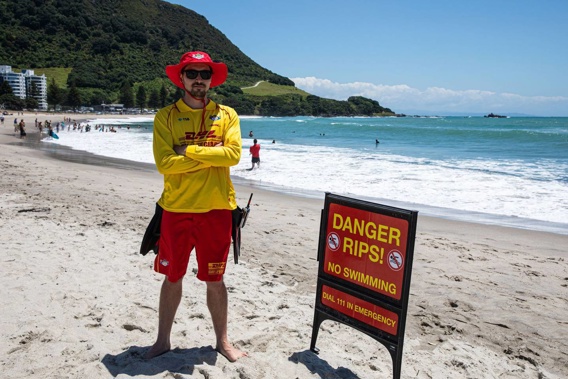
Fine weather is forecast for the weekend and there is good news for water lovers as some Bay of Plenty lakes and beaches reopen for swimming after Cyclone Gabrielle.
According to environmental monitoring body Land, Air, Water Aotearoa (Lawa), Lakes Tarawera and Okareka were cleared for swimming as of 3pm on Friday.
However, a no-swim warning still applied at Lake Tikitapu (Blue Lake), Lake Okaro at the boat ramp, two bays at Lake Rotoehu, Lake Rotoiti at Okawa Bay and Lake Rotorua at Ngongotaha and Holdens Bay.
A no-swim warning also applied to Ōhope Beach at the surf club off Mair St and Tauranga Harbour at Ongare Point and Pahoia Domain.
Lawa’s website shows that 16 of the region’s 80 swimming spots are “unsuitable for swimming”. A further 11 swimming spots have been labelled “caution is advised”.
The cautionary category applies when water quality in an area is usually suitable for swimming but young children, elderly or those with compromised health may be at increased risk.
Lawa project manager Abi Loughnan said the no-swim warnings at some sites would likely stay up longer than the two- to three-day warning that generally followed a storm.
“Given the extreme weather experienced in the North Island, it may take longer for water systems to clear.”
Toi Te Ora Public Health’s website said it was a “rule of thumb” to avoid swimming in rivers, streams, lakes, harbour areas and at beaches for at least 48 hours after heavy rain.
“There is likely to be contamination from rural and urban runoff in waterways after heavy rain. To avoid illnesses such as diarrhoea, vomiting, skin infections or ear infections, follow the rule of thumb of no swimming for at least 48 hours after heavy rain.”
- 'Our totara': League star Issac Luke's father dies in slip during Cyclone Gabrielle
- Volunteer army set up amid heartbreak in Esk Valley disaster zone
- Woman found dead in Hawke’s Bay cottage
The Rotorua Lakes District Council issued a reminder via their website on Wednesday that a no-swim warning applied to all swim spots in the region for two to three days after heavy rain.
“No signage will be erected as this is general advice for all waterways.”
Meanwhile, Bay of Plenty and Coromandel beaches have reopened after being closed due to the path of destruction Cyclone Gabrielle carved across the regions, but people are urged to be vigilant and only swim where and when lifeguards are on duty.
Surf Lifesaving New Zealand eastern region lifesaving manager Chaz Gibbons-Campbell said the water quality was good enough to reopen the beaches at Mount Maunganui, Ōmanu and Pāpāmoa.
However, while beaches were open, people should still be careful and look out for big logs and other debris before they take to the surf, and ensure they only swim between the lifeguarded flagged areas on the beach, he said.
Gibbons-Campbell said after all the severe weather in the past week, there had also been “big dune drop-offs” and people should be careful in and around the dunes.
Maketū and Pukehina beaches were also open but, because of a lot of farm runoff from streams, the regular flagged areas had been moved further down the beaches so people could still make the most of the fine weather, he said.
“So our flags will be out again and lifeguards will be patrolling the beaches again.
“I encourage people to come down to the beach to get some respite from all the stress of being on high alert for at least a week, and to make the most of the sunshine and improved sea conditions.
“There are nice one- to two-foot waves, which is great for boogie boarding, but again I urge caution before jumping into the water.
“I urge people to dust off their sunscreen bottles and ensure they slip, slop, slap and wrap this weekend, so they can really make the most of the better weather, and enjoy themselves.”
Gibbons-Campbell said while Coromandel beaches were open there would only be a skeleton crew of volunteer lifeguards on duty this weekend due to the disastrous impacts on roads, the power grid and water treatment plants.
“Beaches in Gisborne remained closed due to the water quality and Waikanae and Midway beaches have been inundated with massive amounts of ‘slash’ and there were no lifeguards on patrol due to the amount of debris on the beaches and in the water.”
He said it had been a massive week for the country’s surf lifesaving volunteers; more than 170 had assisted with the emergency response to Cyclone Gabrielle since Sunday evening, including Hawke’s Bay and Gisborne Search and Rescue (SAR) squads, who helped with the rescue and evacuation efforts.
“In that time they had rescued more than 50 people, and assisted more than 500 others in Hawke’s Bay to make it to safety and searched for dozens more.”
Gibbons-Campbell said the Western Bay of Plenty SAR squad had been placed on standby all week ready to head to Hawke’s Bay along with Hot Water Beach, Whangamatā and Waihī SAR volunteers.
- Beachgoers should check the SafeSwim.org.nz website to find out which beaches are open, where and when lifeguards are on patrol, and any local hazards to look out for.
Lake recreational water health warnings
Toi Te Ora Public Health recommended avoiding contact with the water at the following Rotorua and Taupō sites due to algal blooms or elevated bacterial contamination:
- Holdens Bay at Lake Rotorua
- Okere Arm at Lake Rotoiti
- Lake Okaro
- Ngongotaha Stream
- Utuhina Stream
- Lake Rotoehu
Source: Toi Te Ora Public Health
Take your Radio, Podcasts and Music with you









